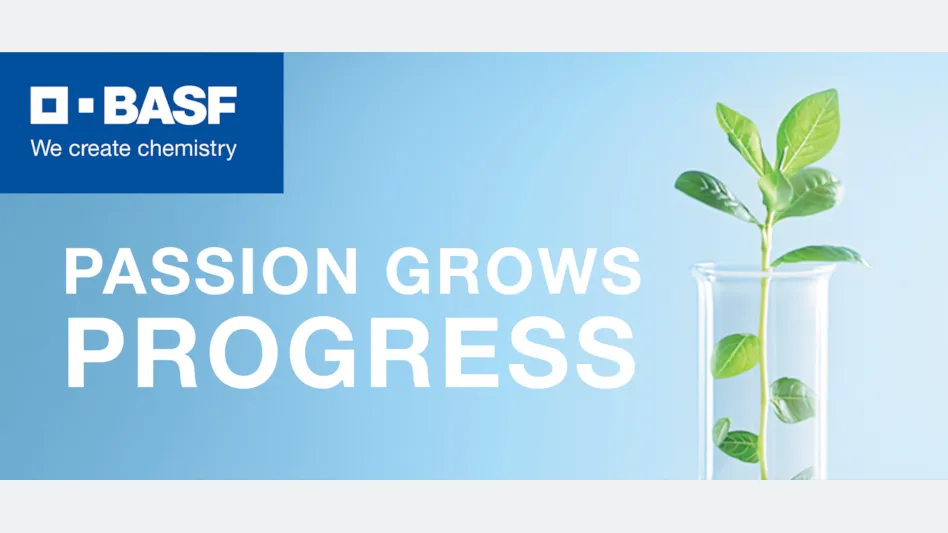
 As with any product, it’s always important to closely monitor and help drive customer trends when it comes to how they value fresh produce. Knowing what is most important to your customer will help you guide strategic marketing efforts and improve margins. So when it comes to marketing your produce, where do you focus your energy?
As with any product, it’s always important to closely monitor and help drive customer trends when it comes to how they value fresh produce. Knowing what is most important to your customer will help you guide strategic marketing efforts and improve margins. So when it comes to marketing your produce, where do you focus your energy?
Know what you sell
Knowing what you’re really selling is the key to modern marketing. Are you selling food? Sure. Are you selling broccoli? Yes. But it’s not that simple: What you’re really selling when it comes to fresh produce is health and wellness. Selling health benefits is how you’ll really capture your customer’s attention and boost sales. Shoppers these days pay attention to the specific health benefits of individual fruits and vegetables. If you can successfully market a key health value of a particular type of produce, chances are you’ll have a hard time keeping it on the shelves for long. Blueberries and avocados are great examples of marketing success stories.
Sales of both blueberries and avocadoes have significantly increased over the last ten years due to some strategic marketing campaigns based on health and wellness. Once the industry started touting the benefits of antioxidants and beneficial fats in the fruits, sales took off. Everyone knows that fresh fruits and vegetables are healthy, but often consumers need something more specific to latch on to when it comes to feeling good about their purchases.
Commodity or brand?
 The evolution of promoting health benefits of specific fruits and vegetables has resulted in new branding efforts. Yes, branding produce is a growing trend. Consumers tend to prefer buying from brands they trust or feel comfortable with, so it makes sense that more produce growers are looking to brand their vegetables and fruits. The California Avocado Commission (CAC), recently launched a new “California” branding and labeling initiative in order to tap into consumer concerns. “Our goal is to have California avocados with a prominent label designating that point of origin in an artful way that mirrors the messaging CAC presents to consumers and retailers in its marketing campaign,” says CAC President Tom Bellamore.
The evolution of promoting health benefits of specific fruits and vegetables has resulted in new branding efforts. Yes, branding produce is a growing trend. Consumers tend to prefer buying from brands they trust or feel comfortable with, so it makes sense that more produce growers are looking to brand their vegetables and fruits. The California Avocado Commission (CAC), recently launched a new “California” branding and labeling initiative in order to tap into consumer concerns. “Our goal is to have California avocados with a prominent label designating that point of origin in an artful way that mirrors the messaging CAC presents to consumers and retailers in its marketing campaign,” says CAC President Tom Bellamore.
They’re also backing up the California branding campaign with consumer research, advertising and social media. “We know based on research that shoppers already prefer premium California-grown avocados,” Bellamore says. “So it was no real surprise that the consumer response was very positive when ‘California’ was clearly visible on labeled fruit.” Bellamore sees CAC’s branded label initiative as a no-lose proposition. He said if the label can be added to the fruit without substantial incremental cost, there is no downside. “Consumers want it. Retailers want it. Growers want it. It’s just the right thing to do,” said Bellamore.
The celebrity treatment
If you haven’t already, be sure to check out the substantial new marketing campaign for blueberries, branding them as Little Blue Dynamos. There is a slick new website (www.blueberrycouncil.org) built by the U.S. Highbush Blueberry Council, complete with health info, recipes and their own celebrity spokeswoman, Alison Sweeney. A berry with its own celebrity endorsement and blog? This is serious branding in action. If you look at the core of the marketing message behind this campaign, it’s all health and wellness wrapped up in a really nice content package.
“The Blueberry Council is committed to creating positive interactions with blueberries that encourage more consumers around the globe to make little changes for a healthier lifestyle,” says Mark Villata, Executive Director of the USHBC. “What we’ve created with this site is a one-stop-shop for relevant and current information about the health benefits of blueberries, the various forms of blueberries and how to use them, as well as creative and simple-to-make recipes. These elements, coupled with many others, are packaged in way that will extend the reach of the Council’s efforts and keep visitors coming back for more.” The council is already seeing positive results from the campaign.
Compete on price or benefits?
Without brand differentiation, a tomato is just a tomato, just a commodity. If you haven’t made a link between health benefits, flavor, color and locale with your branding, it will be tough for the customer to know what makes your produce special. Without differentiation, all you’re left to compete on is volume and price, which is a tough place to be in the produce market these days. Is your corn the sweetest in the county? Are your tomatoes vine-ripened and grown pesticide-free? Then you need to communicate that to your customers. “Local” is a very important factor for consumers in purchasing decisions; how does your branding reinforce its point of origin? Discriminating shoppers want to know all the reasons why they should choose your produce over another grower’s. Creating a brand identity for your standout produce offers a platform for many new marketing opportunities. It also helps you command bigger margins.
How do you rate?
If you haven’t checked it out yet, you may want to take a look at Whole Food’s new three-step rating system for their produce. Their “Good, Better, Best” system rates products on a variety of growing practices and conservation efforts such as pollinator protection, water conservation, chemical pesticide use, biodiversity and soil health, to name a few. Their rating system rewards organic growing practices and also gives a nod to certifications like Fair Trade. Customers will no doubt be making purchasing decisions based on these internal ratings. If you’re selling to Whole Foods, or any other grocery store for that matter, it’s a good idea to closely review how they merchandise and rate products within their stores. You may be able to gear your own branding and packaging to complement in-store marketing.
Wrap it up
 Speaking of packaging, what does yours say about your produce? Is it redundant or does it sell the benefits of your product? Packaging for produce is often treated simply as a protective shipping device. If that’s how you’re treating your packaging then you’re missing out on a key opportunity to talk directly to your customer about your brand. Packaging is one of your most important marketing tools. The style, colors, logo and content are all important. When shoppers buy sweet corn, they already know they're buying sweet corn. Your packaging, or labeling, should communicate the added benefits and uses of your sweet corn, not just the obvious details.
Speaking of packaging, what does yours say about your produce? Is it redundant or does it sell the benefits of your product? Packaging for produce is often treated simply as a protective shipping device. If that’s how you’re treating your packaging then you’re missing out on a key opportunity to talk directly to your customer about your brand. Packaging is one of your most important marketing tools. The style, colors, logo and content are all important. When shoppers buy sweet corn, they already know they're buying sweet corn. Your packaging, or labeling, should communicate the added benefits and uses of your sweet corn, not just the obvious details.
Customers want to feel empowered about what to do with produce when they’re considering buying it. Packaging that includes prep, cooking and serving tips, in addition to important health benefits, can make your produce stand out.
As is the trend across all markets these days, produce growers, distributors and professional organizations need to get more involved in how their product “speaks” to the end-user. Leaving it up to the retailer to represent your brand just isn’t good enough anymore.

Explore the December 2014 Issue
Check out more from this issue and find you next story to read.
Latest from Produce Grower
- DENSO and Certhon introduce Artemy, a fully automated cherry truss tomato harvesting robot
- Landmark Plastic celebrates 40 years
- CropLife applauds introduction of Miscellaneous Tariff Bill
- UF/IFAS researchers work to make beer hops a Florida crop
- Nature's Miracle announces initial shipments of "MiracleTainer" series container farm
- Local Bounti opens new high-tech controlled environment agriculture facility in Pasco, Washington
- NatureSweet responds after ruling by U.S. Court of International Trade that invalidates tax on tomato imports from Mexico
- Former Danone executive becomes chief operating officer at NatureSweet





